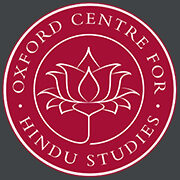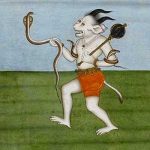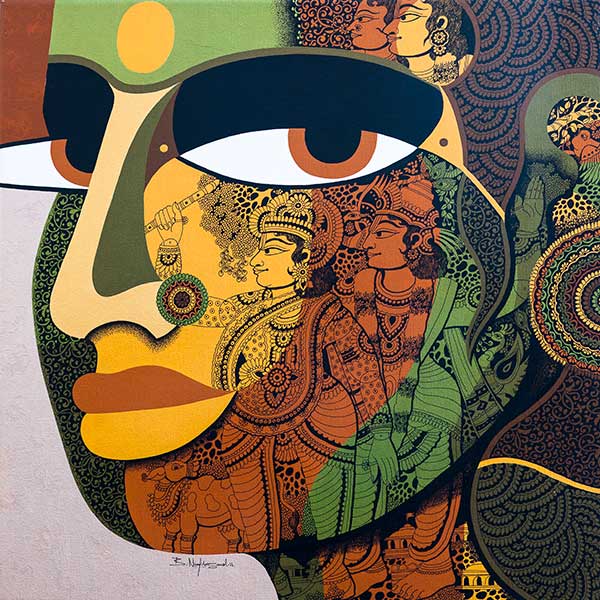Understanding Tantra: Lecture Series
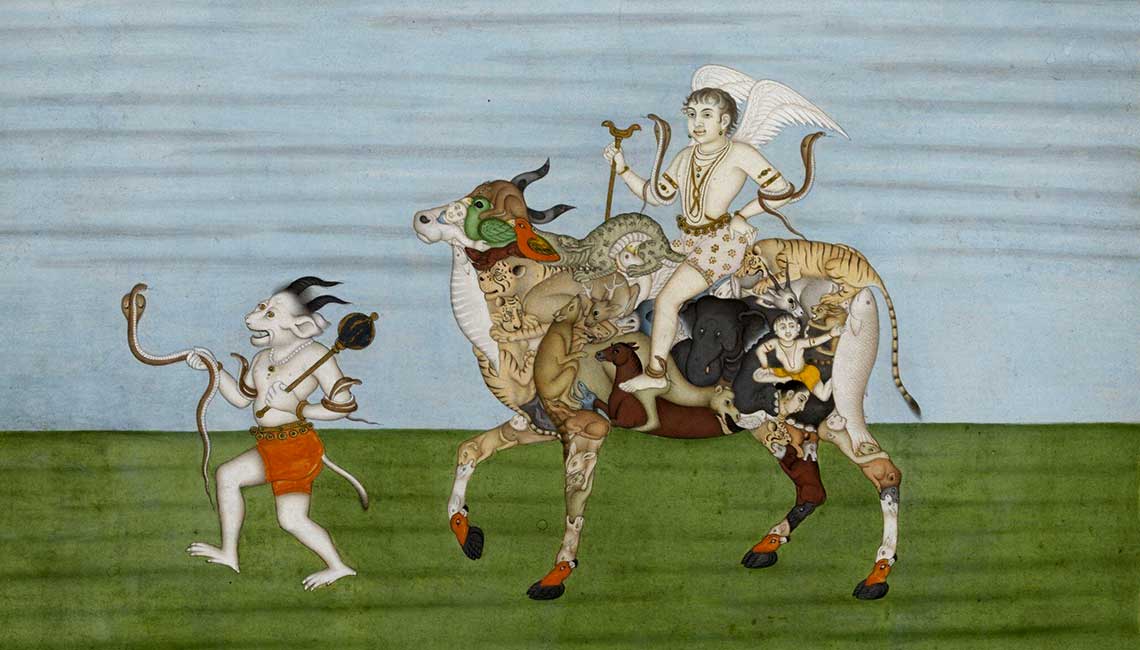
The most misrepresented of all Hindu traditions, Tantra is a complex interweaving of teachings and practices that pervades Vaiṣnava, Śaiva, Śākta, and Smarta traditions. Its roots can be traced back to Vedic times and its influence has spread to Jainism, Buddhism, and beyond.
While sex and secret ritual are an element of some practices, Tantra is much more than that. Tantric ideas have shaped core Hindu practices such as temple building, worship, mantra, yoga, ayurveda, meditation, and guru-disciple relationships. It is a part of everyday life.
This lecture series will demystify Tantra and show that it is more than just esoteric teachings for the few, but is in fact the very fabric of the Hindu world-view.
This lecture series gives you the opportunity to revisit one of our Weekend Schools.
The lectures are all available immediately and permanently.
There is a user forum as well, but unlike our Online Courses, these aren’t moderated and there are no assignments.
£110
Understanding Tantra: Lecture Series
Tantric Sex, the Kāma Sūtra, and Yoga
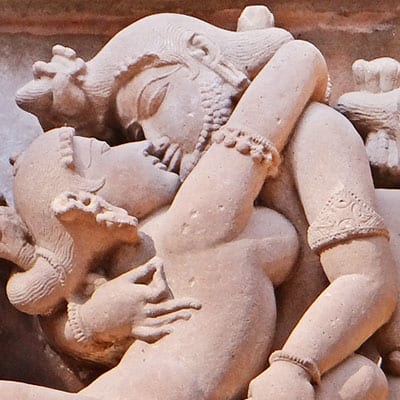
Western interest in Tantra is mostly focused on sex. However, sexual rituals in tantric texts are about physical empowerment and spiritual freedom – not sensual pleasure. How does this compare to the worldlier priorities of the Kāma Sūtra? And are there links between modern “neo-Tantra” and sexual restraint in yogic texts?
Tutor: Daniel Simpson
Tantra and the Hindu Goddess
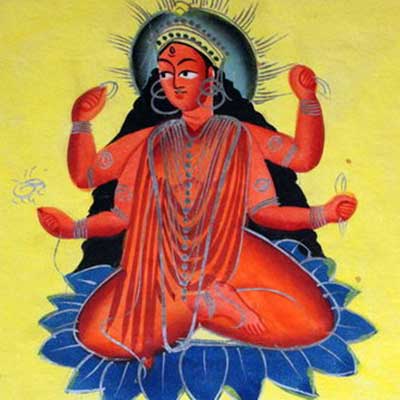
The Sanskrit text Devi Māhātmya (“Glory of the Goddess”) marks the debut of the Hindu Goddess within the Brahminic fold – never before do we see ultimate divinity presented in feminine form. The text narrates the monumental feats of the Hindu divine mother, entailing her slaughter of demons, her manifestation into various forms, and her granting of boons. The Goddess is presented as supreme, transcending the pantheon of Vedic gods, greater even than the Hindu great gods Śiva, Viṣṇu, and Brahmā. Chanted in every corner of the Hindu world during the annual Nine Nights autumnal Goddess festival, the Devī Māhātmya enjoys a vibrant ritual life. It has also been a key text for tantric ritual practice. Why is this so? To what extent can the Devī Māhātmya be said to be a “tantric text” by virtue of its narrative content?
Tutor: Dr Raj Balkaran
Tantra and Indian Religion
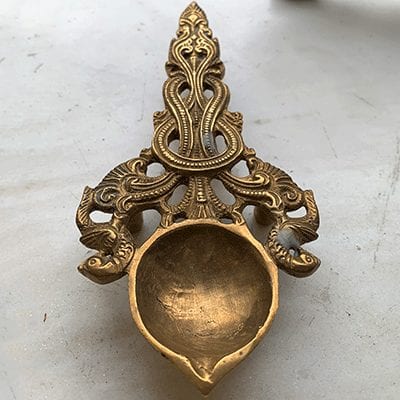
We explore the full dimensions of Tantra and consider its role in the beliefs and practices of Hinduism. Hinduism manifests in many ways, but it is possible to identify two major strands, which we can broadly define as the Vedic and the Tantric. We will establish the nature of these two expressions of Indian spirituality and consider how they relate to each other and are to be recognised in belief and practice such as Yoga and worship.
Tutor: Dr Nick Sutton
Śakteya Mudrās: Hand Gestures in Goddess Tantric Traditions
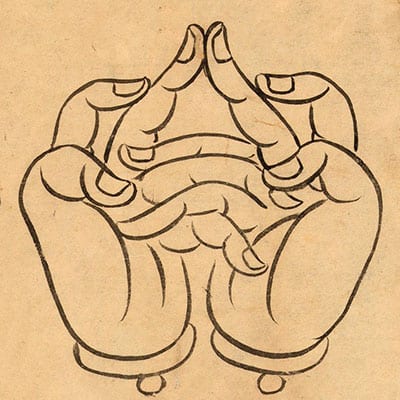
In this session we attempt to understand and model hand gestures (mudrās) in tantric rituals. Rooted in older traditions, mudrās are an integral part of tantric ritual. Śākteya tantric practitioners construct a symbolic world through mudrās and in this talk we will explore how these are taught. On a broader level this talk seeks to explore the ways in which body-symbolism (particularly hand gestures) have emerged in Śākta traditions and how this practice has become ‘performative’ by applying a semiotic approach. This talk will also explore anthropological observations conducted during this research, in the form of documentary films.
Tutor: Dr Janaki Nair
The Tantric Body
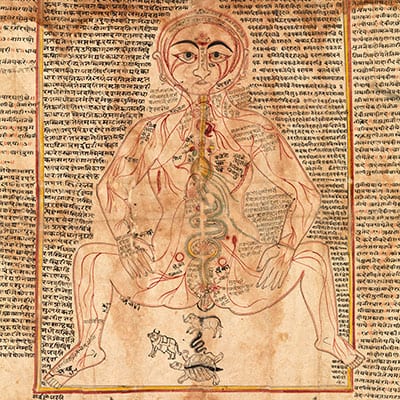
The body is important in Tantra, but in more mysterious ways than many people imagine. This session leads us to a more complete understanding of the role of the body in Tantric traditions as a vehicle for spirituality.
Tutor: Prof. Gavin Flood
Aghora Tantra in Kāmākhyā
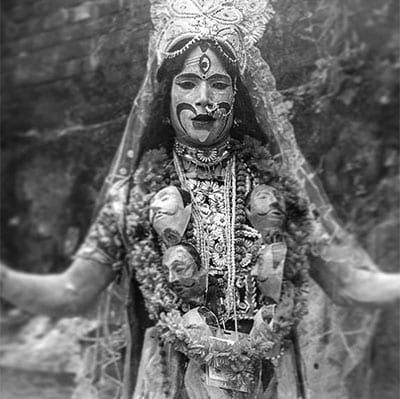
A visual guide to the history and rituals of the Kāmākhyā temple in Assam, India. The temple of the Goddess Kāmākhyā is considered one of the śakti piṭhas (seating place of the śakti) of the Goddess. Rare still and moving images show the complexities of tantric rituals to the Goddess.
Tutor: Prema Goet
The Path of Desire: Living Tantra in Northeast India
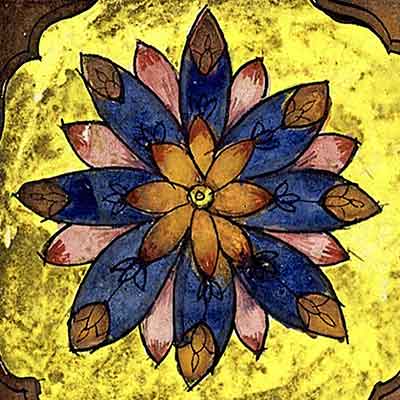
This presentation is based on a current work-in-progress on the living Tantric traditions of Assam. Long revered as one of the oldest and most important seats of Tantra in South Asia, Assam (aka Kamarupa) remains a vibrant center of Tantric practice to this day. But Tantra here includes not only the more elite, Sanskritic Tantric lineages but also the more popular or “folk” forms of Tantra, which include the practice of magic, healing, and spirit possession.
Tutor: Prof. Hugh Urban
Kashmir Śaivism: The Tantric Advaita
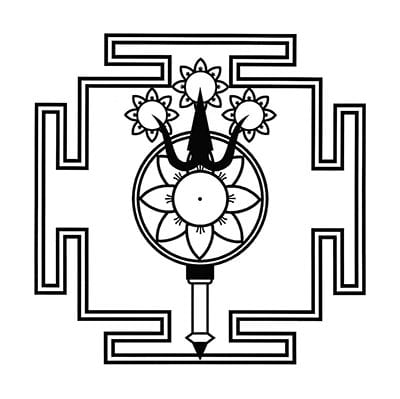
Kashmir Śaivism reveals the Tantric approach to religion as non-dualist. Śaṅkarācārya, generally viewed to be the principal exponent of non-dualism (advaita), teaches transcendence of the manifest world. But in Kashmir Śaivism we find a form of advaita that is more concerned with the notion of the world as a reality that is Śiva himself. By considering these two expressions of advaita we can identify the fundamental distinctions that exist between the Vedic and Tantric expressions of Hindu spirituality.
Tutor: Dr Nick Sutton
Tantra: History and Tradition

It helps to understand Tantra in relation to the Hinduism of its time – the seventh to eleventh centuries. We will examine the distinction between followers of the Vedas and followers of Tantra. We will see how the tantric traditions arose partly from traditions of renunciation and partly from popular religious practices, and how they became mainstream forms of religion in medieval South and Southeast Asia. We will look at early Tantras and reactions against the tantric tradition. We will also examine Tantra’s contemporary importance.
Tutor: Prof. Gavin Flood
How Tantra Changed Yoga

Early yogis mostly practised meditation and ascetic austerities. The influence of Tantra shifted the focus from physical transcendence to transformation. Instead of seeing the body as an obstacle, yogis could work with it. This shaped the development of non-seated postures and other dynamic ingredients of modern practice.
Tutor: Daniel Simpson
Tantra in the Kathmandu Valley
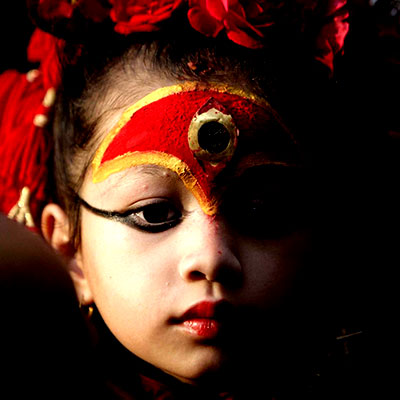
In this lecture we will encounter an example of tantric history and practice as we encounter it among the Newars of the Kathmandu Valley. The Newars combine Buddhist and Hindu practices and have a rich tantric heritage in which many rituals and practices are well preserved. We will focus on the worship of the goddess and ritual practice from both a historical and contemporary perspective.
Tutor: Gitte Poulsen
Defending the Faith: The Radha Tantra
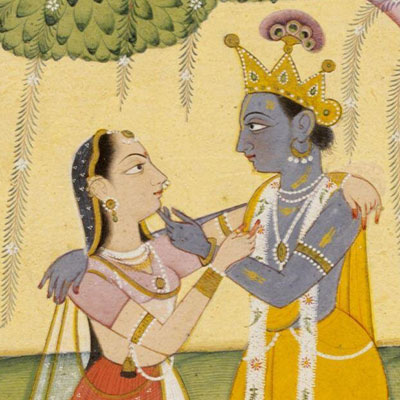
The Radha Tantra is a late (17th century) Shakta Tantra from Bengal. In this talk, we introduce this little-known but fascinating text as an example of how the transgressive side of Tantra can take the form of apologetics. Using Vaishnava sources, the Radha Tantra completely recasts the story of Radha and Krishna in a way that for Vaishnavas could be bewildering and infuriating, but that has much to say about the religious landscape of 17th-century Bengal.
Tutor: Dr Måns Broo
Tantric Goals and Practices

In this session we will describe tantric goals and practices and try to understand what exactly is Tantra is and how does it differ from other practices. Is it characterised by the ritual divinisation of the body? Is it characterised by the use of mantras? Or visualisation? Is it characterised by transgressive practices such as ritual sex? Is it characterised by inner yoga practices involving the movement of powers in the body? Or is it all of these? We will address all these questions with reference to particular practices and texts.
Tutor: Prof. Gavin Flood
Your Tutors
Dr Raj Balkaran
Dr Raj Balkaran is a scholar of Sanskrit narrative texts and the author of The Goddess and the King in Indian Myth (Routledge 2018), The Goddess and the Sun in Indian Myth (Routledge 2020). Having taught comparative religion and mythology at the University of Toronto School of Continuing Studies for a decade, he now Tutors at the Oxford Centre for Hindu Studies where he also serves on the Continuing Education Department’s Course Development Board. Alongside his academic training, he has received extensive spiritual training as part of an oral tradition dedicated to the transmission of Indian wisdom teachings. Integrating his academic and spiritual training, he has founded the online School of Indian Wisdom where he designs and delivers original online courses centred on the practical life wisdom to be found in the philosophical, mythological and spiritual traditions of ancient India. Beyond teaching and research, Dr Balkaran runs a thriving life consulting practice and hosts the New Books in Indian Religions podcast.
Dr Måns Broo
Måns Broo is a senior lecturer in Religious Studies at Åbo Akademi University, Finland. His research interests include yoga, tantra, and Gaudiya Vaishnavism. Dr Broo is a Research Fellow at the Oxford Centre for Hindu Studies.
Prof. Gavin Flood
Author of The Tantric Body, the definitive text on Tantra. Prof. Flood is Professor of Hindu Studies and Comparative Religion at Oxford University, Academic Director of the Oxford Centre for Hindu Studies, Senior Research Fellow at Campion Hall, and Yap Kim Hao Visiting Professor of Comparative Religious Studies at Yale-NUS Singapore.
Prema Goet
Prema is a multi-disciplinary researcher in the culture and languages of South Asia. He holds a degree in South Asian Studies and Sanskrit from SOAS, where he also obtained his Master’s degree in Philosophy and Religion. Prema works with practitioners from India, Nepal, and Bangladesh, documenting and producing works on tantric rituals, the worship of Goddess(es), and yogic practices. He is a documentary researcher for the OCHS Sākta Traditions project.
Dr Janaki Nair
Janaki Nair is researching semiotics in ancient cultural and religious practices using visual anthropological methods. She is a documentary film maker and also a member of OCHS Sakta traditions research project.
Gitte Poulsen
Gitte has a Masters in Religious Studies from Aarhus University, Denmark but has completed most of her studies in Varanasi, India, and as a visiting student at the Oxford Centre for Hindu Studies. Gitte’s focus is on Yoga, Tantra, and Sanskrit. She is also a dedicated practitioner of āsana and prāṇāyāma. She manages the OCHS Kathmandu Office where she oversees the daily operation and focuses on Nepali and Newari language as well as Śākta traditions among the Newar community of The Kathmandu Valley.
Daniel Simpson
Daniel has a Master’s degree in Traditions of Yoga and Meditation from SOAS, University of London. He’s also a devoted practitioner of asana, pranayama and meditation, which he’s studied on numerous visits to India since the 1990s. Daniel previously worked as a foreign correspondent, which helps him make complex subjects feel accessible. He writes about yoga for magazines and on his website: www.danielsimpson.info
Dr Nick Sutton
Nick is the Director – and the heart and soul – of the OCHS Continuing Education Department. He is a dedicated teacher with decades of experience in making sometimes-confusing traditions relevant. He has created over a dozen online courses and is working on many more. He has written translations and commentary on Bhagavad Gītā and the Yoga Sūtra. Nick received his Phd from Lancaster University (1995). His thesis was on the religious teachings of the Mahabharata.
Prof. Hugh B. Urban
Hugh B. Urban is interested in the study of secrecy in religion, particularly in relation to questions of knowledge and power. Focusing primarily on the traditions of South Asia, he is author of Tantra: Sex, Secrecy, Politics and Power in the Study of Religion (2003) and Magia Sexualis: Sex, Magic, and Liberation in Modern Western Esotericism (2006), among other books.
